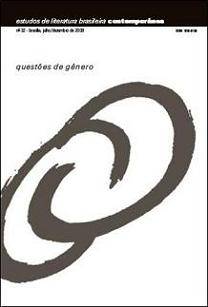De Pequeod a Satolep:
identidades em jogo na obra de Vitor Ramil
Abstract
A hipótese do trabalho é que a análise de ambos os romances do escritor gaúcho Vitor Ramil, Pequod (1995) e Satolep (2008), permitem identificar de que modo o autor trata questões como identidade, alteridade, criação artística e intertextualidade, as quais refletem as idéias principais desenvolvidas em seu ensaio “A estética do frio” (1992 e 2004).
Downloads
References
AGOSTINI, Agostinho Luís. O pampa na cidade: o imaginário social da música popular gaúcha. Dissertação (Mestrado em Letras e Cultura Regional) ”“ Universidade de Caxias do Sul, 2005.
AJZENBERG, Bernardo. “Uma aventura nas águas de Melville”. Folha de São Paulo. São Paulo, 14/06/1996.
ARENDT, João Cláudio (org.). Histórias de um Bruxo Velho: ensaios sobre Simões Lopes Neto. Caxias do Sul: EDUCS, 2004.
BELLIS, Peter. No mysteries out of ourselves: identity and textual form on the novels of Herman Melville. Philadelphia: University of Pennsylvania Press, 1990.
BERND, Zilá. “Enraizamento e errância: duas faces da questão identitária”, em SCARPELLI, Marli Fantini e DUARTE, Eduardo de Assis (org.). Poéticas da diversidade. Belo Horizonte: Faculdade de Letras da UFMG, 2002, pp. 36-46.
BEZANSON, Walter. “Moby-Dick: document, drama, dream”, em BRYANT, John (org.). A companion to Melville’s studies. New York, Westerpot, London: Grennwood Press, 1986, pp. 169-209.
BRYANT, John. “Moby-Dick as revolution”, em LEVINE, Robert (org.). The Cambridge companion to Herman Melville. Cambridge: Cambridge Universty Press, 1998. pp. 65-89.
CADY, Edwin. “As through a glass darkly: the Bible in the nineteenth-century American novel”, em GUN, Gilles (org.). The bible and American arts and letters, Philadelphia: Fortress Press, 1983. pp. 33-55.
CARVALHO, Bernardo. Mongólia. São Paulo: Companhia das Letras, 2003.
CHIAPINNI, Lígia. No entretanto dos tempos: literatura e história em João Simões Lopes Neto. São Paulo: Martins Fontes, 1988.
CORRÊA, Gilnei Oleiro. “A viagem fria de Pequod”. Quatro por Quatro. Pelotas, 2005, pp. 99-124.
COURTOIS, Jean-Patrice. “Syntaxe de l’impossible”. Europe, n°. 744, abr. 1991, pp. 69-80.
DELEUZE, Gilles. Différence et répétition. Paris: Presses Universitaires de France, 1968.
DIMOCK, Wai-Chee. Empire for liberty: Melville and the poetics of individualism. Princeton, New Jersey: Princeton University Press, 1989.
DRYDEN, Edgar. “Ishmael as a teller: self-conscious form in Moby-Dick”, em _______. (org.). Melville’s thematics of form ”“ the great art of telling the truth. Baltimore: The Johns Hopkins Press, 1968. pp. 81-113.
FRANCHOT, Jenny. “Melville’s travelling God”, em LEVINE, Robert (org.). The Cambridge companion to Herman Melville. Cambridge: Cambridge University Press, 1998. pp. 157-85.
HAMILTON, William. “Reading Moby-Dick”, em _______. Reading Moby-Dick and other essays. New York: Peter Lang, 1989. pp. 01-77.
MELVILLE, Herman. Moby-Dick. Oxford: Oxford University Press, 1998.
RAMIL, Vitor. “A estética do frio”, em Fischer, Luís Augusto (org.). Nós, os gaúchos. Porto Alegre: Editora da UFRGS, 1992. pp. 262-70.
_______. “A estética do frio: conferência de Genebra”. Porto Alegre: Satolep, 2004.
_______. “Moby-Dick: eu olho, tu olhas, ele olha; nós olhamos, vós olhais, eles olham ”“ Um ensaio sobre Moby-Dick e Pequod”, em _______. Pequod. Porto Alegre: L&PM, 1999, pp. 113-24.
_______. Pequod. Porto Alegre: Artes & Ofícios, 1995.
_______. Pequod. Porto Alegre: L&PM, 1999.
_______. Péquod. Trad. de Luciana Wrege Rassier e Jean-José Mesguen. Paris: L’Harmattan, 2003.
_______. Satolep. São Paulo: Cosac Naify, 2008.
SACH, Viola. La contre-Bible de Melville: Moby-Dick déchiffré. Paris: Mouton, 1975.
_______. “Le langage de la nature et la désarticulation de l’identité américaine”, Europe, n°. 744, abr. 1991, pp. 21-31.
SHERRIL, Rowland. “Melville and religion”, em BRYANT, John (org.). A companion to Melville’s studies. New York, Westerpot, London: Grennwood Press, 1986. pp. 481-513.
STOUT, Janis. “Melville’s use of the book of Job”, Nineteenth-Century Fiction, n°. 25, jun. 1970, pp. 69-83.
VINCENT, Howard. “Ishmael, écrivain et critique d’art”, L’Arc. Paris, 1970, pp. 43-50.
WREGE RASSIER, Luciana. “A problemática identitária na ‘Estética do Frio’ de Vitor Ramil”. Antares, n°. 1. Revista do Programa de Pós-Graduação em Letras e Cultura Regional da Universidade de Caxias do Sul, jan.-jun.
Disponível em: . (em tratamento).
_______. “O universo passa na minha rua”. Entrevista com Vitor Ramil, seguida de trechos inéditos de Satolep. Quadrant, n°. 21. Montpellier, 2004, pp. 209-13 e 229-37.
WRIGHT, Nathalia. “Moby-Dick: Jonah’s or Job’s Whale?”. American Literature, nº. 37, maio 1965, pp. 190-5.
Discografia
RAMIL, Vitor. Longes. Satolep Music, 2004.
_______. Ramilonga: a estética do frio. Satolep Music, 1997.
_______. Satolep Sambatown. MP, B Discos, 2007.
_______. Tambong. Satolep Music, 2000.
Downloads
Published
How to Cite
Issue
Section
License
Authors who publish in this journal agree to the following terms:
a) The authors maintain the copyright and grant the journal the right of first publication, the work being simultaneously licensed under the Creative Commons Attribution License-Non Commercial 4.0 which allows the sharing of the work with acknowledgment of the authorship of the work and publication this journal.
b) Authors are authorized to enter into additional contracts separately, for non-exclusive distribution of the version of the work published in this journal (eg publish in institutional repository or as a book chapter), with authorship recognition and publication in this journal.
c) Authors are allowed and encouraged to publish and distribute their work online (eg in institutional repositories or on their personal page) after the editorial process, as this can generate productive changes, as well as increase the impact and citation of published work (See The Effect of Free Access).
d) The authors of the approved works authorize the magazine to, after publication, transfer its content for reproduction in content crawlers, virtual libraries and the like.
e) The authors assume that the texts submitted to the publication are of their original creation, being fully responsible for their content in the event of possible opposition by third parties.


